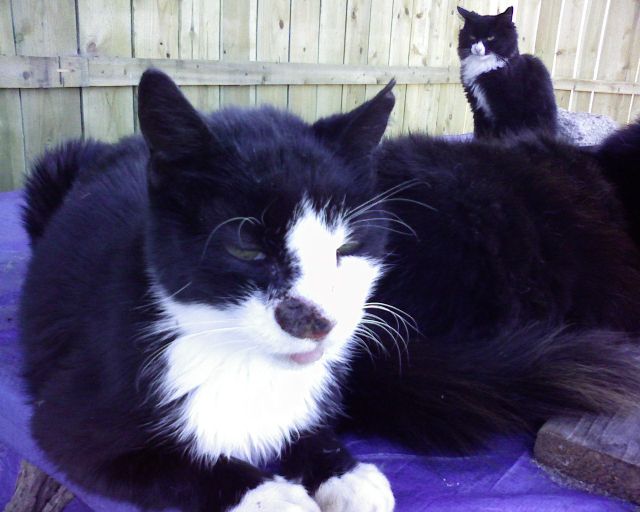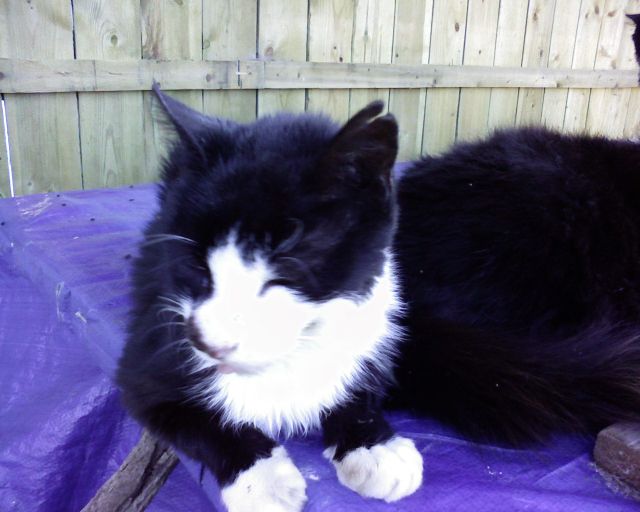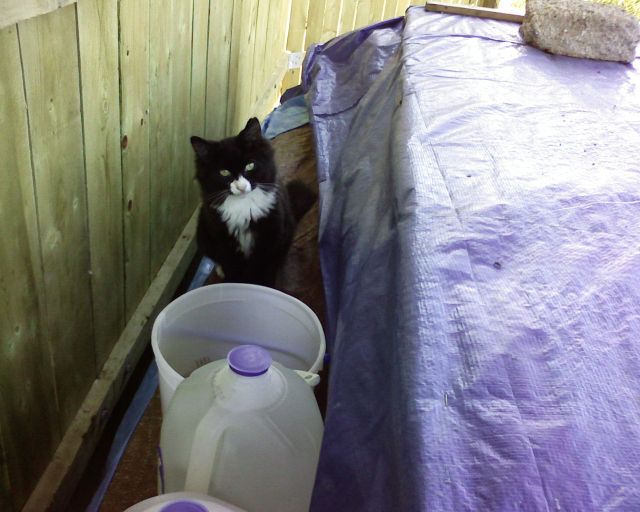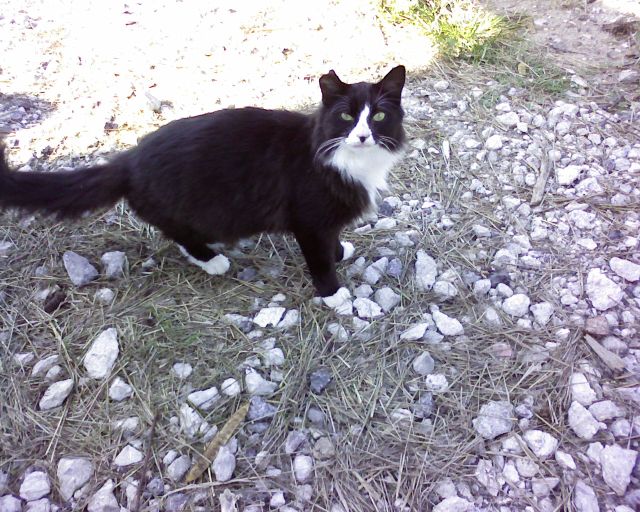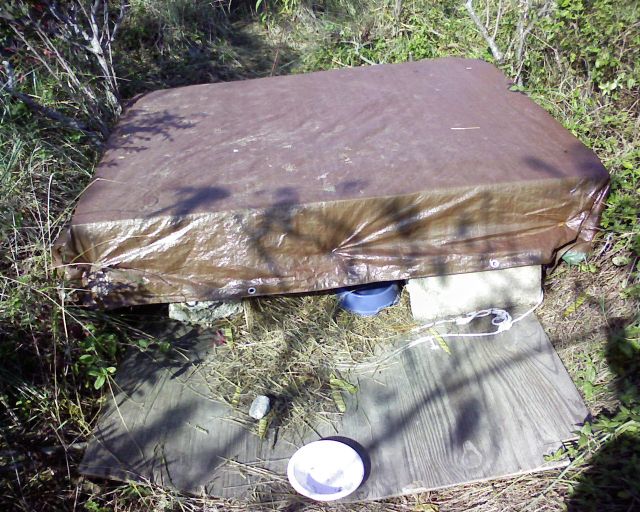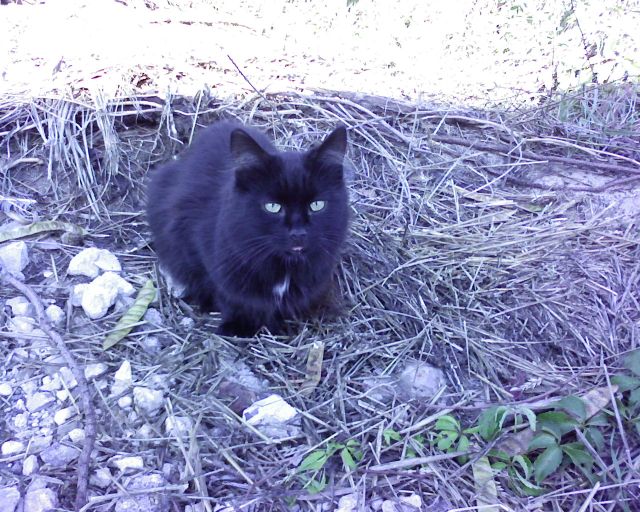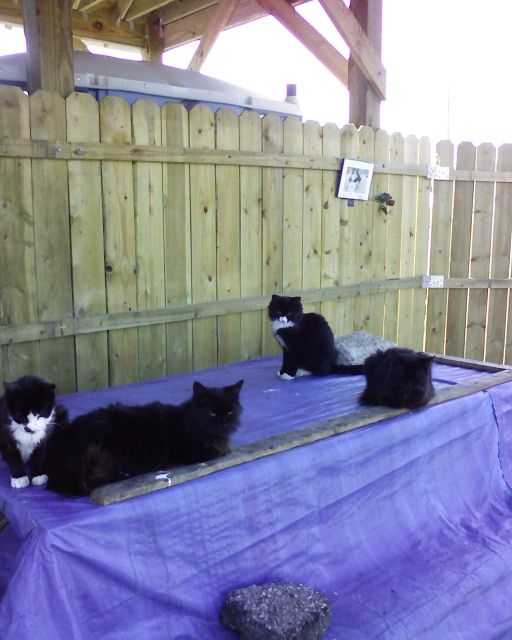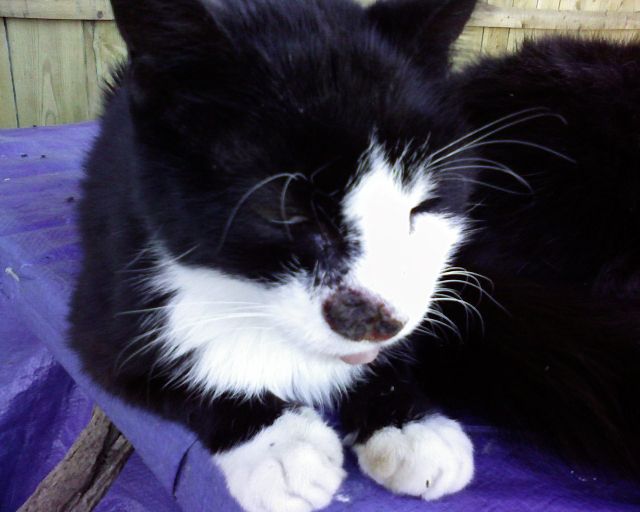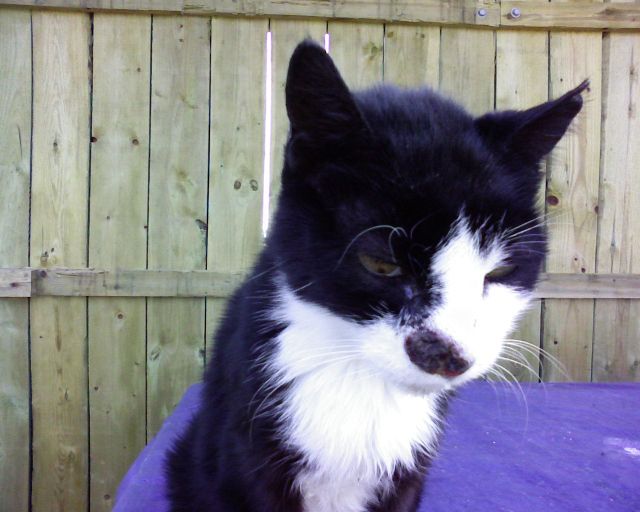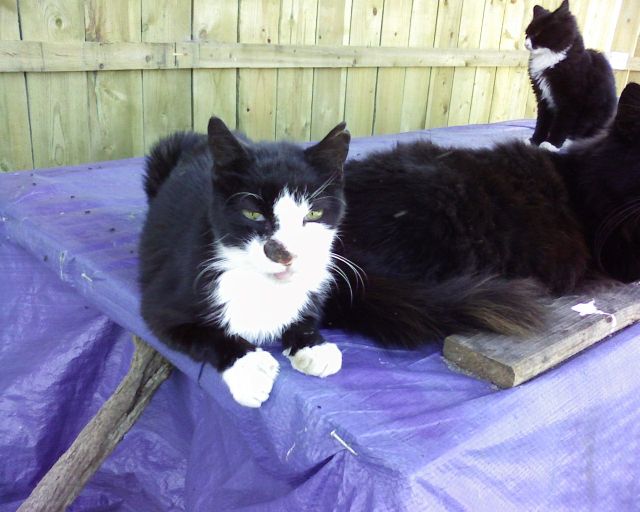Would you consider this to be humane?
Take a look at what we found at David Douglass Park near the Cape May-Lewes ferry grounds:
On October 15, 2007 we visited this park known to be home to a managed feral cat colony. The Lower Township Department of Parks and Recreation mentions pavilions, picnic tables, benches and a scenic view. Sounds good - until you see the cats hanging around the portable toilets.
Behind that area is a feeding station and several makeshift shelters for feral cats - only the cats are not feral. We, perfect strangers to these animals, walked right up to them and stood inches away. We saw eight cats and out of those eight, six did not budge, one took a few steps backwards and one turned around and walked away. Wild cats indeed!
The cats, in general, did not look healthy. One in particular was thin, had flies on him and had what appeared to be a large abscess on and next to his nose. How terrible! Who is 'taking care' of these animals? Why are these perfectly friendly felines not in homes? Isn't TNR supposed to be for FERAL cats that behave as wild animals that will attack when cornered or run like heck when approached?
We were there for about 15 minutes and noticed several things. We noticed that the cats approached us thinking we may have had food. The food bowls were empty. We noticed that the gulls started to vocalize and fly above us anticipating a meal. We noticed a yellow-rumped warbler, a federally protected migratory bird, in a tree a few feet away from the cats. We noticed many, many Monarch butterflies en route to their wintering grounds. We noticed a sign posted by Lower Township informing the public not to abandon domesticated animals. Finally we noticed a young girl say, "Mommy, mommy, look at the kitty. Look, there's another one!" and wondered what would happen and who would be liable if the young child approached one of these sickly cats, especially if the cat decided not to tolerate the whims of curious children.
Some feel that 'nature should take its course' but nature did not intend for domestic cats to be living and dying in the wild.
How is this humane?
How is this good for public health?
How is this an environmentally responsible and effective way to handle feral (or in this case, not so feral) cats?
In the Township of Lower Code Book there is the following:
ARTICLE II Registration and Vaccination of Cats [Adopted by Ord. No. 94-1 (Ch. VA of the 1975 Code)]
§ 166-9. Registration of cats; rabies vaccination.
Any person owning or caring for any cat within the confines of Lower Township will be required to have the cat vaccinated for rabies and register such cat with the Township Clerk's office, providing proof of such vaccination, name, address and phone number of owner, description of cat and the location of where the cat resides.
§ 166-10. Identification tag to prove rabies vaccination required.
All such cats shall be required to have the appropriate tag or other form of identification suitable to indicate or provide information to ensure a valid rabies vaccination.
§ 166-11. Enforcement.
The Police Department, Township Code Enforcement Official and the Animal Control Officer are hereby authorized to enforce the provisions of this article.
§ 166-12. Violations and penalties.
Any person found guilty of violating the provisions of this article shall, upon conviction, be subject to a fine for the first offense of $25; $50 for the second offense; and $100 for the third and each subsequent offense.
How do we know that these cats were vaccinated for rabies? How do we know that the cats are up to date on their vaccinations? None of them had tags. Did anybody register them? Would that person be held accountable should there be a problem?
And this:
ARTICLE III Wildlife Feeding [Adopted 10-2-2006 by Ord. No. 2006-18]
§ 166-13. Purpose.
The purpose of this article is to prohibit the feeding of unconfined wildlife in any public park or on any other property owned or operated by Township of Lower, so as to protect public health, safety and welfare, and to prescribe penalties for failure to comply.
§ 166-14. Definitions.
For the purpose of this article, the following terms, phrases, words and their derivations shall have the meanings stated herein unless their use in the text of this article clearly demonstrates a different meaning. When not inconsistent with the context, words used in the present tense include the future, words used in the plural number include the singular number, and words used in the singular number include the plural number. The word "shall" is always mandatory and not merely directory.
FEED - To give, place, expose, deposit, distribute or scatter any edible material with the intention of feeding, attracting or enticing wildlife. Feeding does not include baiting in the legal taking of fish and/or game.
PERSON - Any individual, corporation, company, partnership, firm, association, or political subdivision of this state subject to municipal jurisdiction.
WILDLIFE - All animals that are neither human nor domesticated.
§ 166-15. Prohibited conduct.
No person shall feed, in any public park or on any other property owned or operated by Township of Lower, any wildlife, excluding confined wildlife (for example, wildlife confined in zoos, parks or rehabilitation centers, or unconfined wildlife at environmental education centers, or feral cats as part of an approved trap-neuter-release program).
§ 166-16. Enforcement.
A. This article shall be enforced by the Lower Township Police Department and/or other municipal officials of the Township of Lower.
B. Any person found to be in violation of this article shall be ordered to cease the feeding immediately.
§ 166-17. Violations and penalties.
Any person(s) who is found to be in violation of the provisions of this article shall be subject to a maximum penalty, upon conviction, of a fine not exceeding $1,000 or imprisonment for a period not exceeding 90 days, or both (N.J.S.A. 40:49 5).
Who approved the program? What IS an approved TNR program? We wondered what wildlife was inadvertently being fed because of that artificial food source for the cats.
Further, releasing these free-roaming felines seems to be in direct conflict with the General Rules and Regulations for Park and Recreation Areas that state that "It shall be unlawful for any person in a public park or recreation area to cause or permit any animal to run loose or have animals other than service animals in any park or recreation area".
Below are photos. This is the reality for the cats and apparently better than giving these felines a home or euthanasia.
There were a brown-striped tabby, two short-haired black and white cats, three long-haired black cats, and two long-haired black and white cats.


